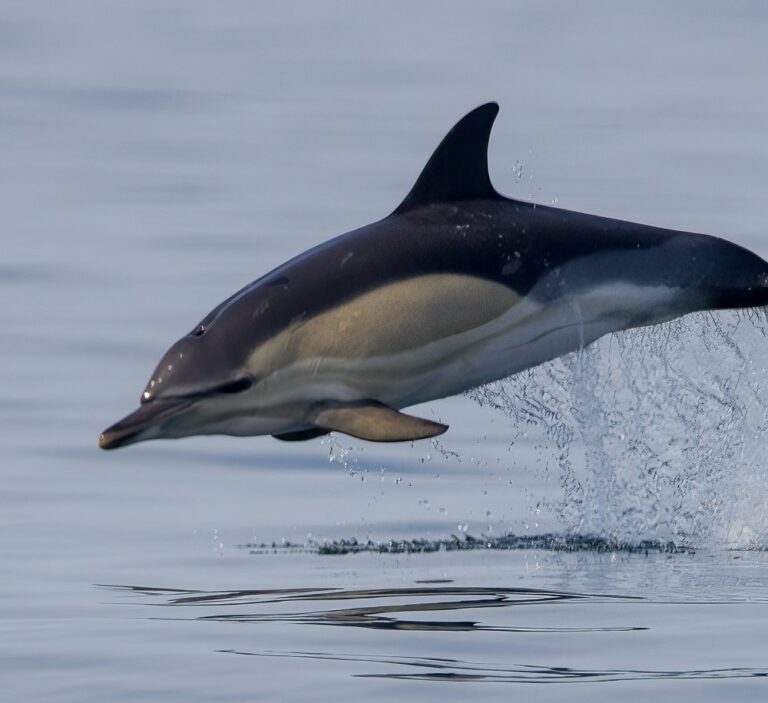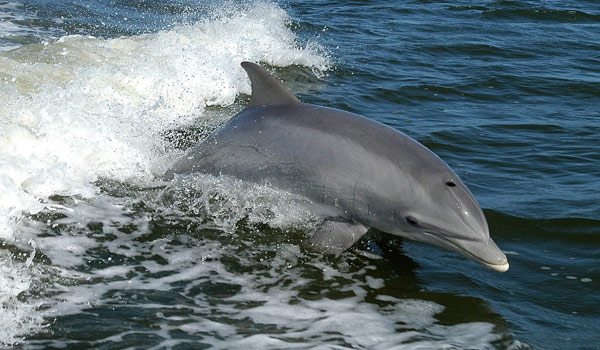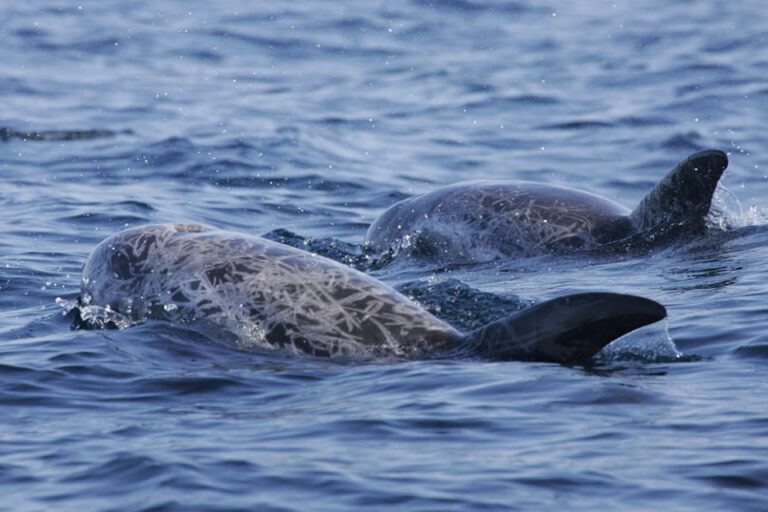Your GUIDE TO dolphins IN CORNWALL
Dolphins are actually classed as small gregarious (that means they live in groups/organised communities) toothed whales. Known for their distinctive curved fin on their backs and beak-like snouts. Dolphins are extremely well known for their sociable nature and high intelligence; they’ve even been known to use tools and problem solve. In Cornwall we are lucky enough to be home to many pods of dolphins or many species. Read on to discover more!
Dolphins in Padstow: An interview with a Sealife Guide | Padstow Sealife Safari
Want to know about Cornish Dolphins? Look no further, Robin discusses what our favourite resident Dolphins in Padstow are up to. Learn more about dolphins he...
AMAZING Wild Dolphin Footage in Cornwall | Padstow Sealife Safari
Check out this AMAZING dolphins in their natural habitat. Learn more about dolphins in Cornwall here
9 interesting facts about dolphins:
They name themselves - just like humans
It’s been proven that they develop their own unique whistle which is used by other dolphins to recognize them.
Dolphins have two stomachs
One for storage and the other for digestion.
Dolphins are well known great divers
They can reach up to 1,000 feet underwater before having to come up for a breath.
Dolphins are very caring
They can often be seen tending to the ill or older members of their group.
They have midwives
When dolphins give birth there is a dolphin ‘midwife’ there to make sure the baby is delivered safely and is able to get to the surface to take its first breath.
Dolphins are helping us hunt for aliens
Scientists have been analysing dolphin communication as a viable form of reaching out to some of the billions of galaxies in the universe.
There are 42 types of dolphin
38 types of Oceanic Dolphins and 4 River Dolphins – There’s almost a dolphin for every oceanic environment.
There are 3000+ dolphins in captivity
They are currently held at tourist entertainment venues worldwide. Mostly in the US and Japan.
Dolphins are fast!
Dolphins can reach speeds of over 30km an hour!
Dolphin FAQs
The best way to see dolphins in Cornwall is via our boat trips of course! A few types of dolphin you may see on your boat trip include Common Dolphins (Delphinus delphis), and Bottlenose Dolphins (Tursiops truncatus) and the more elusive Risso’s Dolphins (Grampus griseus).
As their name suggests, the dolphin you will most likely encounter is the Common Dolphin. Common Dolphins live in pods of around 20 in UK waters and are extremely inquisitive characters. Because of their sociable nature, these dolphins tend to interact with the boats a lot more, giving you an up-close view of their beautiful pod. The Common Dolphin may be easier for you to spot: they can often be seen in their pods following the boats or you’ll see them jumping out of the water as they swim. They have a very distinctive yellow and grey ‘hourglass’ pattern along their sides. Lucky for us, they tend to frequent the deep waters off the Cornish coast, just outside of Padstow!
Yes, dolphins are mammals, specifically marine mammals. This means that they are warm blooded, child bearing aquatic creatures. However unlike land mammals, aquatic mammals like dolphins and whales have a seperate breathing and food passage. This stops them from drowning when hunting and eating their prey. Because of this dolphins don’t actually possess vocal cords and instead uses their nasal passage to produce the distinctive clicks and whistles.
The earliest records of dolphins can be traced back as far as 10 million years. So they’ve been around for a while! Their closest relatives – the whales are even older, existing as far back as 40 million years ago, they lived on land before slowly evolving into the marine mammals we know today. Looking in to the past makes it easier to understand why these exclusively aquatic animals are mammals.
No, dolphins aren’t fish. Although they do spend their entire lives in the water, dolphins still have to breathe air. Fish don’t breathe air or have lungs, they have gills which allow them to take oxygen from the water. Dolphins rely on their blowhole for breathing above the surface. Dolphins are ‘conscious breathers’, meaning they have to think about every breath they take so never fall asleep completely because they’d drown.
Dolphins vertebrae move vertically, similar to our human spines whereas most fish move their vertebrae horizontally (side to side) to move through the water.
Another distinctive quality is that dolphins are warm blooded. Although not all fish are cold blooded, most are because water is a ‘heat sink’ meaning it drains the heat out of surrounding objects which means it takes a lot of energy to stay at a constant heat. Dolphins combat this by surrounding their body with a thick layer of fat (commonly called blubber) which helps them stay warm in the chilly seas!
Almost everywhere! Dolphins live in all oceans of the planet and even in some rivers too. There are 38 types of oceanic dolphins and 4 river dolphin so with 42 different species there’s almost a dolphin for every oceanic environment. One of the best known dolphin (the bottlenose) lives in every ocean in the world – bar the Arctic and Antarctic.
Most dolphins live in the shallow waters, on the ocean’s continental shelves. These areas are generally more productive and have more food than the open ocean, but some of the larger species do venture further out.
They aren’t too picky. Being predators dolphins have to hunt for their food and on average need to eat between 4-9% of their body weight in fish per day. Their diets depend mostly on where they are. In Cornwall dolphins predominantly eat fish like herring, cod or mackerel but may also eat squid or other cephalopods. The largest member of the dolphin family, the killer whale may eat marine mammals like seals or sea lions – sometimes even turtles!
Dolphins use several methods to catch their prey:
- Herding: This is a cooperative hunt performed by a pod. Splitting into two, one group surrounds a school of fish while the other group take turns to eat through the compacted school of fish.
- Corraling: The Dolphins trap fish in shallow waters.
- Stunning: Certain species of dolphins will stun their prey as a method of feeding. When killer whales hunt they tend to use their tails to hit their prey in the water or throw them, stunning them enough to make a fatal blow.
Yes, Killer whales or Orca are often confused with being a whale thanks to their misleading name. Killer Whales are the largest member of the dolphin family with the largest Orca recorded to be 32 feet long and 6 tons! Their distinctive black and white markings vary depending where they live. Like their dolphin relatives, killer whales live anywhere. They’re the most widely distributed mammals (bar humans) on the planet.
Dolphins do sleep but not like land mammals. When it’s time to sleep the dolphin will shut down one hemisphere of it’s brain and close the opposite eye and will alternate this throughout its ‘sleep’. The side of the brain that’s awake monitors the environment and controls breathing. There are three main reasons why they do this:
- This type of sleep allows them to keep moving constantly which helps the warm blooded dolphin to maintain a constant heat.
- To look out for danger and predators.
- If they were fully unconscious they would likely drown because they have to be constantly holding their breath while underwater.
Elsewhere in the world, dolphins may be predated on by large species of shark or orca (killer whales); but here in Cornwall they are top of the food chain and have no predators to worry about.
Depending on the species, dolphins can live up to 90 years. Although in captivity these ages tend to be more than halved. Smaller dolphin species will live an average of 25 – 30 years, but killer whales have a 40 – 60 year lifespan, with some even estimated to live for 90 years. Meanwhile, captive killer whales have an average lifespan of 25 years or less. This shows the best place for them to be is wild and free.
Some are. The Māui’s dolphin, found in the waters of New Zealand, is on the brink of extinction due to the masses of discarded fishing gear (ghost gear) with estimates suggesting less than 100 of these dolphins remain in existence. No dolphins in Cornish waters are on the endangered list, however they are still at risk of entanglement in fishing gear.
Baby dolphins are called calves. Dolphins give birth to one calf every 1-6 years, however occasionally they can have twins.
A group of dolphins is called a pod. These are normally made up of around 12 dolphins. However, with an abundance of food, they can reach up to 1000 individuals – this is called a superpod.
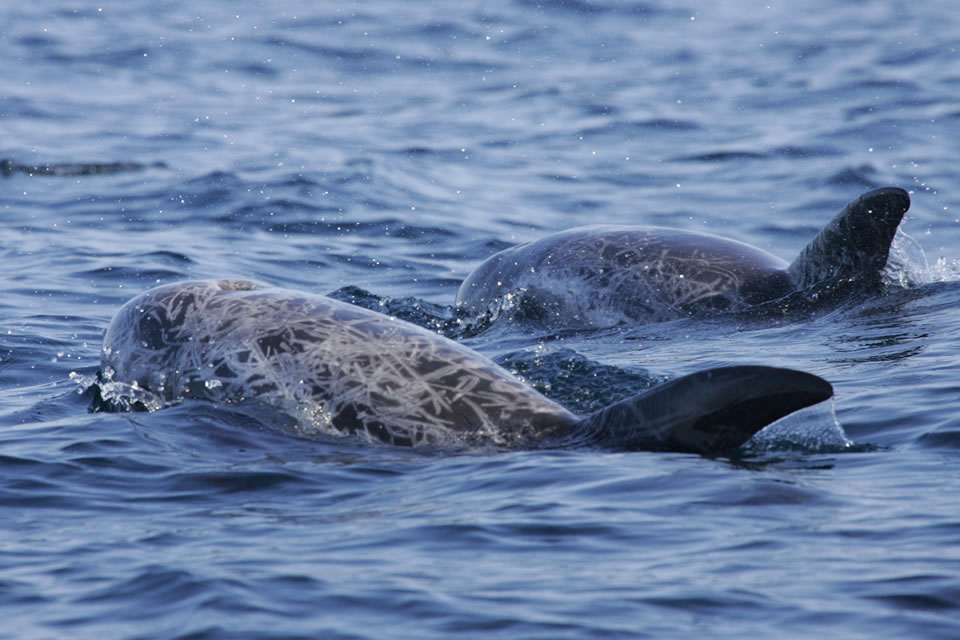
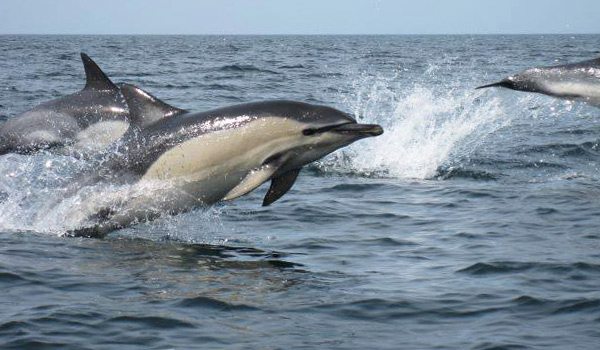
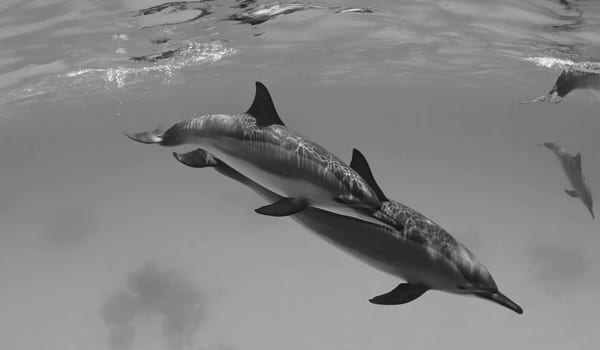
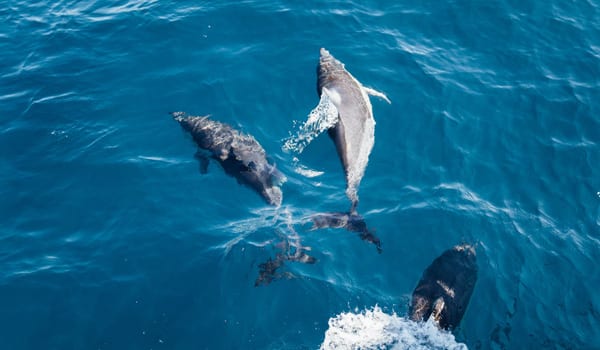
Book your dolphin boat tour in Cornwall
Our popular 2 Hour Sea Life Safari tour would be the best option if you’re looking to see the dolphins. Allowing more time and plenty of opportunities to search for dolphin pods, you’ll be sure to see a lot more fascinating and exciting wildlife on the way. Or hire the boat! Our skipper knows exactly where to search for the best opportunity to see the dolphins.
Padstow Sealife Safaris offer a selection of the best boat trips in Cornwall for you to get up close with these most beautiful sea creatures. And with smaller boats of up to just 12 passengers, you can be sure to get a magnificent view of these lovely and playful mammals.
Dolphin Species in Cornwall
A few types of dolphin found in Cornish waters that you may see on your boat trip include Common Dolphins (Delphinus delphis), Bottlenose Dolphins (Tursiops truncatus) and the more elusive Risso’s Dolphins (Grampus griseus).
